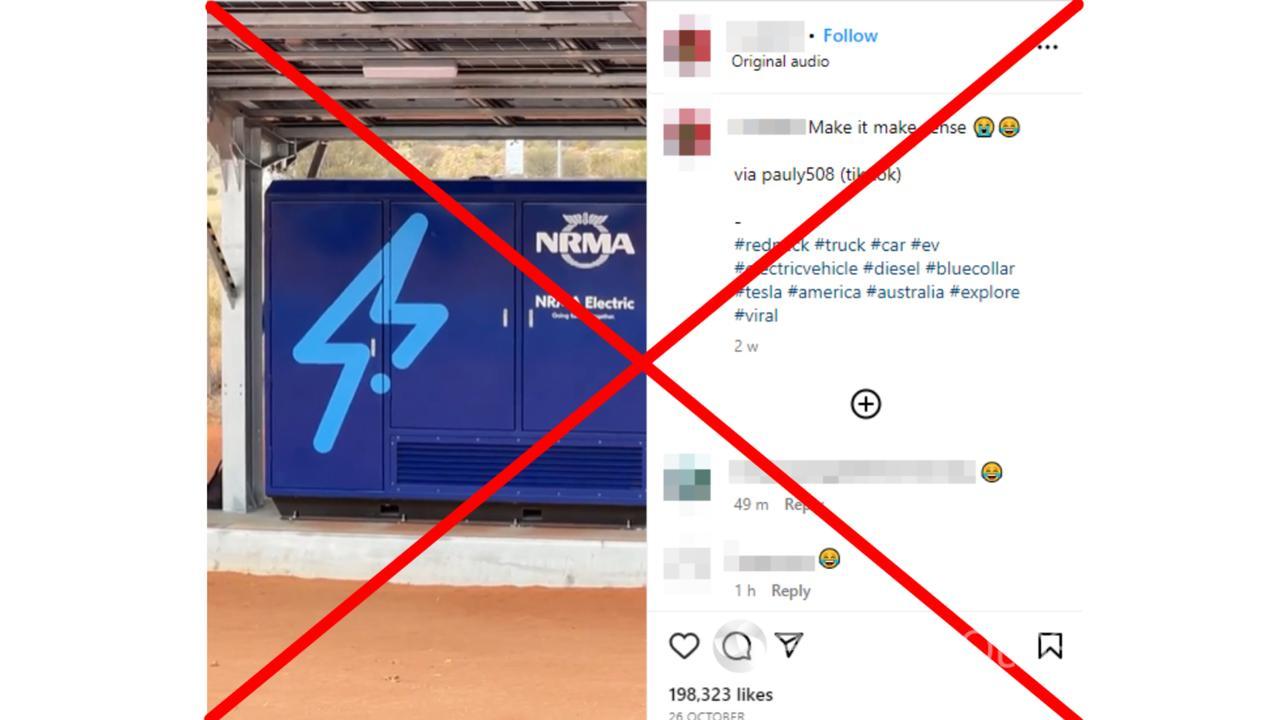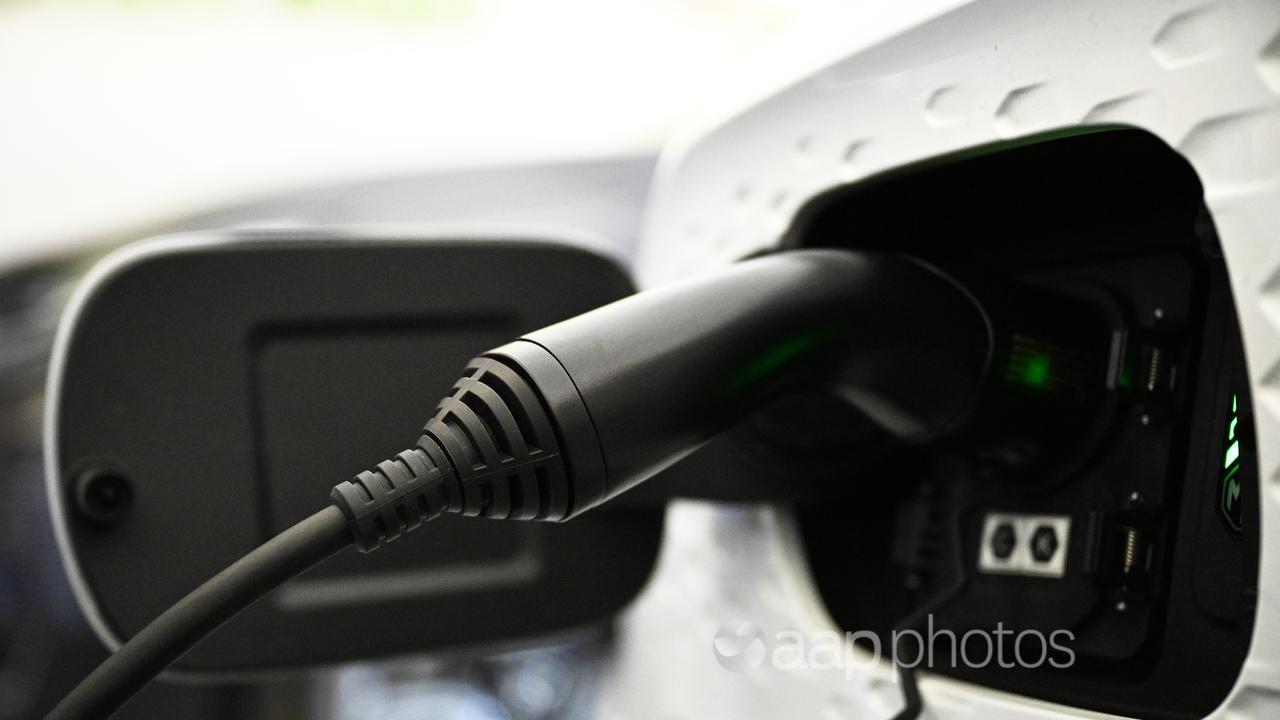A viral video claims an electric vehicle (EV) charging station in Australia’s outback is powered entirely by a diesel generator.
This is false. The off-grid prototype station uses solar panels as its initial energy source, with the generator included as an emergency backup.
A social media user made the claim while filming the NRMA charging station at Erldunda in Central Australia.
But he unknowingly debunked his own claim by capturing the EV station’s initial energy source – a roof made out of solar panels.
“Look! It’s an electric charger for an electric car and right there that is a diesel-powered generator to run your electric charging point for your car,” the person filming says as they show the charging points and generator.
“That generator runs 24 hours of the day, seven days a week.
“We’re saving the planet to charge your electric car.
“Does it make a lot of sense to you? Cause it doesn’t make a lot of sense to me.”

The Instagram clip (archived here) is spreading across social media (including here, here, here and here) and has almost 200,000 likes.
The EV station is NRMA’s off-grid prototype for remote charging, using solar power with a backup fuel generator as part of testing to help develop a national network.
The station is in a remote part of the Northern Territory, about 200km south of Alice Springs.
In a TikTok video, the NRMA explained its facility has a “three-tiered approach” to power generation.
The initial source of power is the solar panel roof. The secondary source of power is a battery bank, which stores the excess power generated from the solar installation.
The third tier is a backup diesel generator.
The generator “only kicks in if there is not enough power being brought in by the panels and if the battery banks are depleted,” the TikTok video explains.
“Having this approach just means if you are in a remote area you can rely on getting a charge.”
The NRMA told AAP FactCheck the solar charging efficiency depends on how full the facility’s battery is, how many vehicles use the station in a day, and how much charge an EV needs.
The station was set up for testing in October 2023. It is still being evaluated and is not a fully operational site.
An NRMA article states the testing will help develop strategies for remote EV charging programs in partnership with the Australian government.
The Verdict
The claim an Australian outback electric vehicle charging station is entirely powered by a diesel generator is false.
The NRMA prototype station’s initial source of energy is its solar panels.
The station automatically switches to a backup diesel-powered generator if there is not enough power generated by the solar installation.
False – The claim is inaccurate.
UPDATE 15/11/23 @3.20pm: Changes made to the wording of the short verdict, long verdict and paragraphs 2, 4 and 13. The words “main” and “primary” have been replaced by “initial” as the extent to which the facility is powered by the solar installation is dependent on various factors and therefore unknown.
AAP FactCheck is an accredited member of the International Fact-Checking Network. To keep up with our latest fact checks, follow us on Facebook, Twitter and Instagram.
All information, text and images included on the AAP Websites is for personal use only and may not be re-written, copied, re-sold or re-distributed, framed, linked, shared onto social media or otherwise used whether for compensation of any kind or not, unless you have the prior written permission of AAP. For more information, please refer to our standard terms and conditions.


















